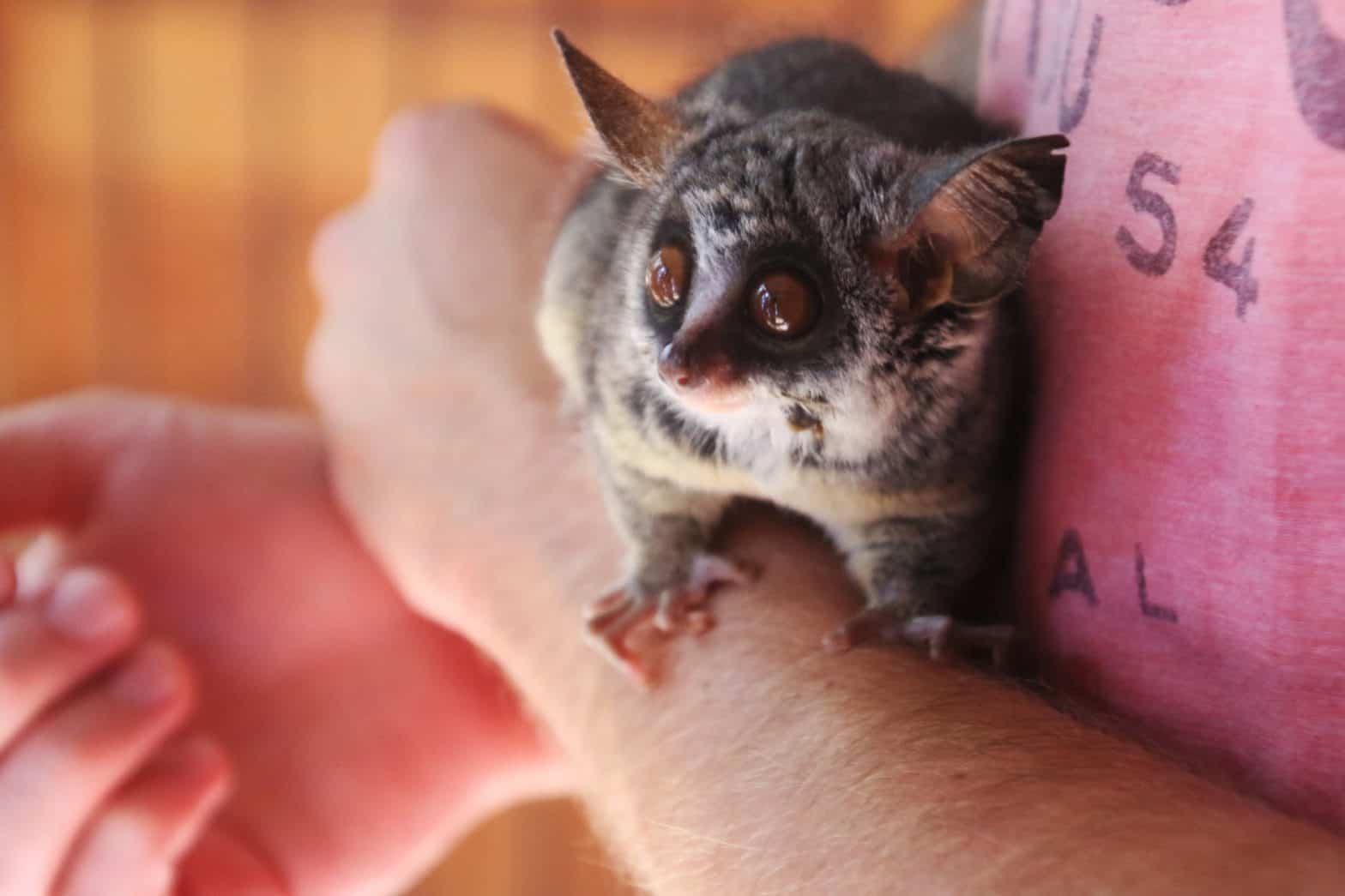Table of Contents
*This post may contain affiliate links. As an Amazon Associate we earn from qualifying purchases.
There are three different names used when referring to this primitive primate that lives in the wild in Africa.
There is a reason for each of the names given to this small mammal, but these little creatures are more than just what you call them – they are an interesting nocturnal creature. Interesting not only because of their looks, but also their “cry.”
What Is a Bushbaby?

Galago is the main name for bush babies, likely because they are of the family Galagidae. They are also called nagapies, which means “little night monkeys.” They are a relative to the monkey and the lemur (and can often be found in sanctuaries for monkeys if they’ve been injured in the wild), and they are nocturnal, so this name makes complete sense.
Bush Babies are small creatures, only 7 to 10 inches in size, and weighing around 5 to 10 ounces. They can be a grayish-silver color all the way to dark brown coloring. Their heads are small, their bodies long, their tails a bit bushy, and they have clawed toes that help them climb around in the trees.
But Why Are Galago Also Known as a Bush Baby?

Well, there are some varied reasons for this clever little name. One of the main thoughts is that the name “Bushbaby” comes from the sound this little night monkey makes. Its call sounds like a wailing cry of a child.
Their childlike cry is how they communicate with other Galagos, as well as how they let others know they are entering their territory. It’s not their only form of communication, but it’s the one that stands out to people staying near their habitats.
Their name may also come from their cute appearance. They have those big, cute baby eyes.
Whether it is their vocal sounds or the way they look, Bushbaby is one of the most common terms you’ll here in America. Just remember, when in Africa you’ll often hear them referred to as their other names.
Looking into Bush Baby Eyes

One thing that really stands out the most when you look at a photo of a bush baby (or see them in the zoo or on safari) is their eyes. These little monkey-like creatures have unique eyes that are enormous and face the front.
It’s not just the placing of the eyes, but also the size of them. Bush baby eyes are large in proportion to their heads, and those amazing eyes cannot move around like your eyes do. If they want to look side to side they have to turn their entire head – luckily they can turn their heads enough to look behind them right over their shoulders.
Other Facts Worth Knowing About the Bushbaby
The cute primate known as the bushbaby has so many other interesting things about them. While their childlike cries and their big eyes may have intrigued you enough, here’s a little bit more about this tiny creature.
1. The Bushbaby Habitat


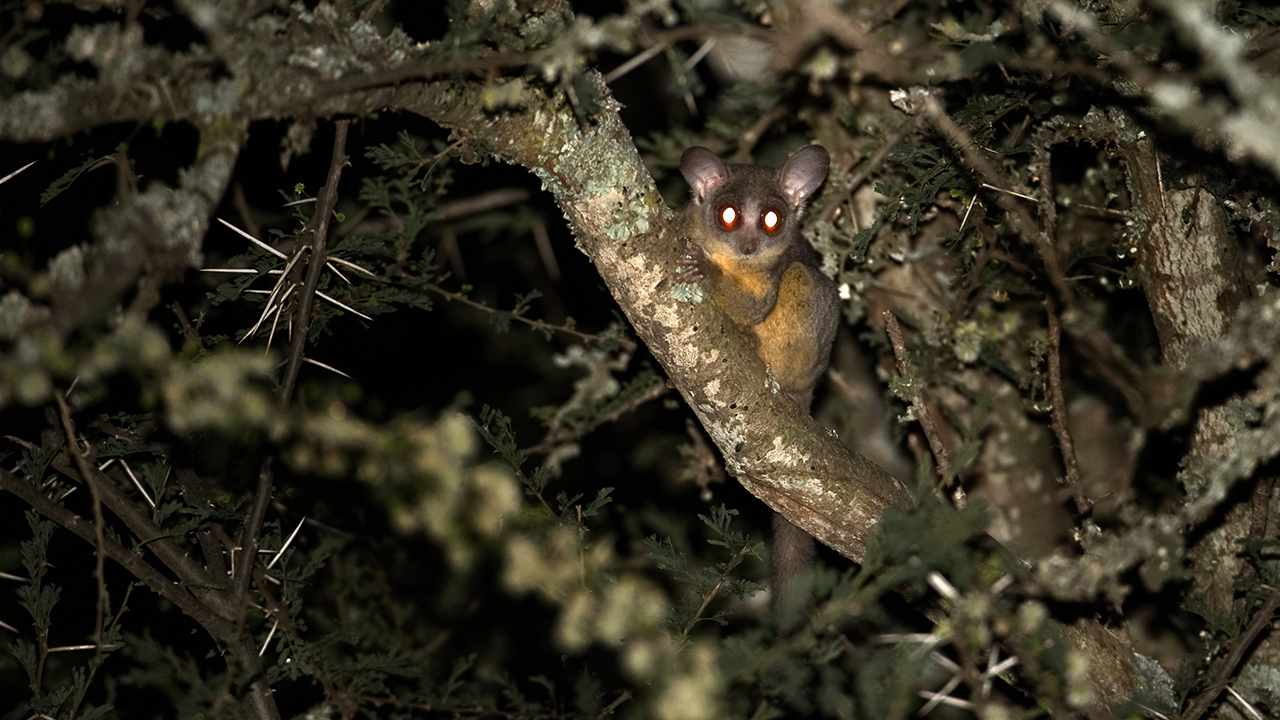
Bush babies live mainly in East Africa and sub-Saharan Africa and can be found in woodland areas, including the savanna, forests, and the thickets. They tend to prefer drier areas.
They tend to stay below altitudes of 65,000 feet, living in hollows in trees for shelter. They sometimes make nests in branch forks, but these homes are less common. They choose to live in trees that don’t have a lot of grass around them (which may protect them from being affected by forest fires).
2. The Bushbaby Diet
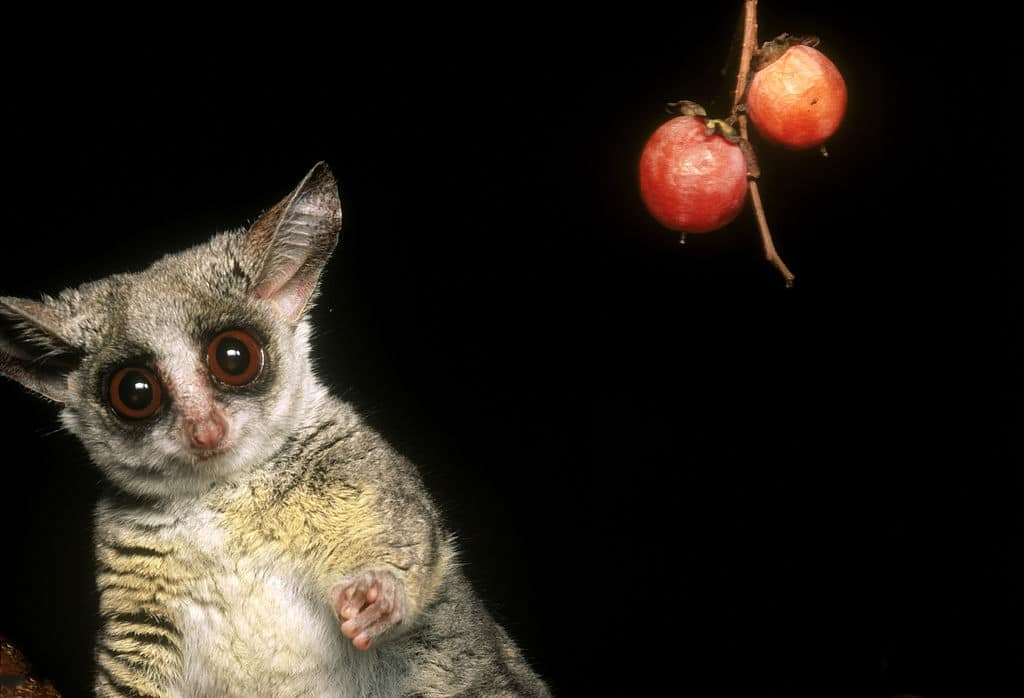
The Bushbaby is an omnivore, meaning they eat meat and plants. Their diet consists of acacia gum, fruit, and small insects.
Bush babies have large ears, not just large eyes. It is by sound that they locate flying insects and other bugs to feed on. They are agile and fast, which helps them to grab and catch food with their long fingers and claws.
3. The Bushbaby Communicating
Bush babies don’t just make wailing crying noises. They also communicate using different clicks, grunts, and crackles.
They also communicate in ways aside from making noises. They use scent signals, by washing their hands and feet in their own urine. This not only marks their food and their territory, but it also gives them a better grip when they are jumping from branch to branch and tree to tree.
Bush babies have home ranges that overlap with one another. Because of this, they use secretions from chest glands to mark their territory.
4. Bushbaby Breeding

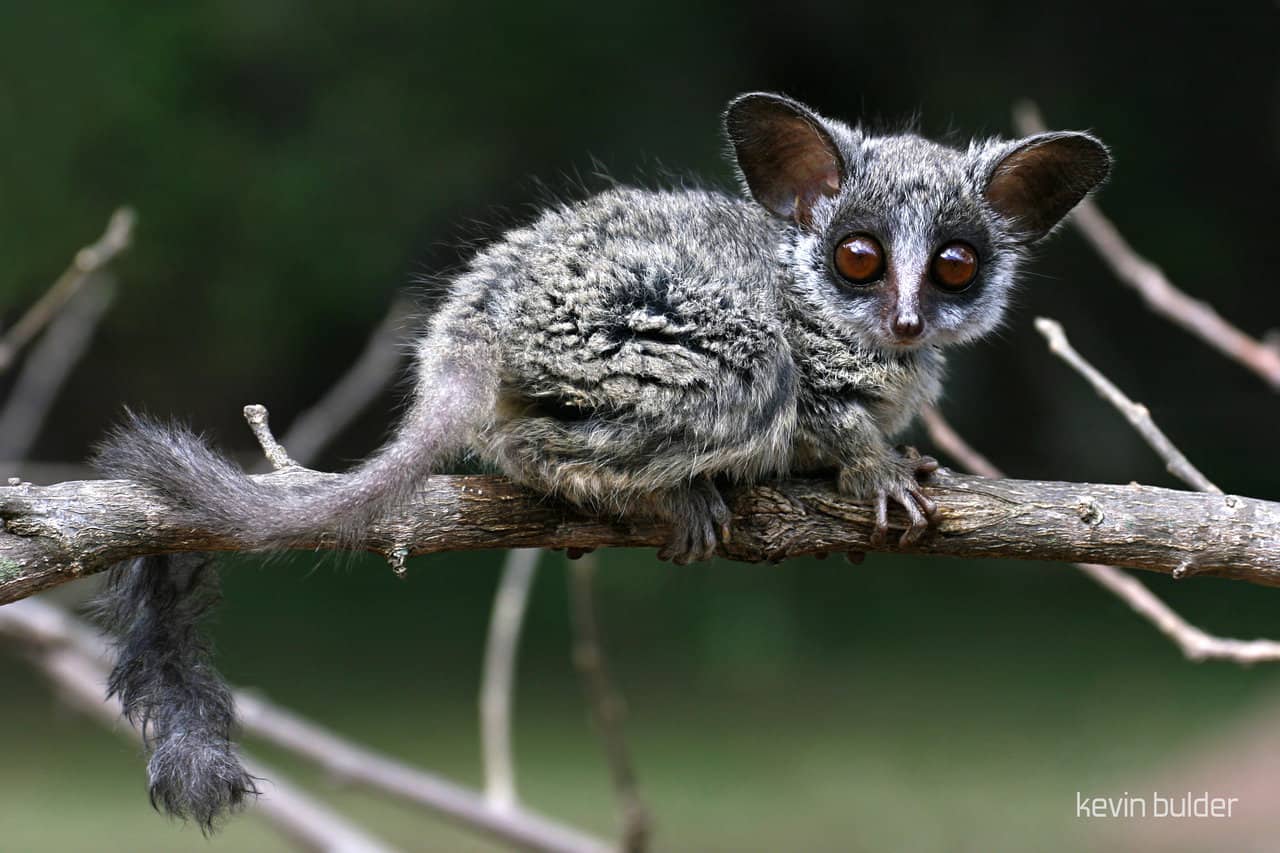
Like many animals, the Bushbaby has an interesting mating ritual. The females will fight off males that approach them, and males will sometimes fight to the death over a female that is ready to reproduce. The male checks to see if she’s in heat by sniffing her genitals (the heat cycle usually lasts a few days – less than a week).
Once mating begins, it is repeated every two hours for about five minutes at a time (obviously stopping at some point, when fertility is reached). Gestation lasts for four months.
Once the babies are born, their mother will stay with them constantly for the first three days. They’re weaned when they’re six weeks old and then ready to do their own thing at two months old. Youthful males move out, and females commonly stay within the group they were born into.
5. Bushbaby Enemies

Being such a small mammal, it makes sense that bush babies would have predators galore. While they don’t have much to fear from humans, they do find predators in snakes, owls, African wild cats, and more. Being able to hide out in the trees protects them from some predators, but opens them up to others.
There’s More Than One Type of Bushbaby
There are actually two different types of Bushbaby. There is the lesser bush baby and the thick-tailed bush baby. Here’s a look at these two types of Galagos.
1. The Lesser Bushbaby

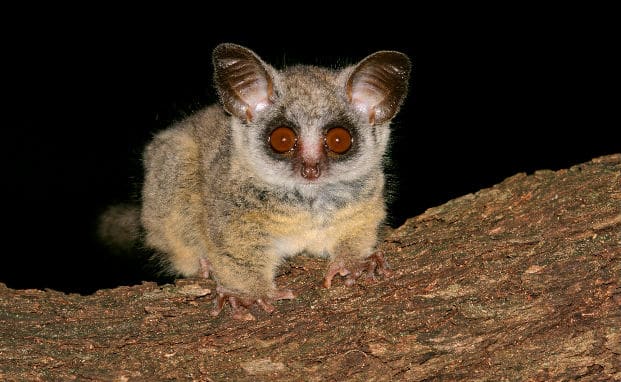
Much of the former information here is about the lesser Bushbaby. They have about 25 different types of vocal calls, using not just that wailing cry but also clucks to warn about intruders.
Many of the traits of the lesser Bushbaby are the same as the thick-tailed Bushbaby – it’s often that you’ll learn about one and not even know that there are two different types of these small nocturnal primates.
2. The Thick-Tailed Bushbaby

Both types of Bushbabies are amazing climbers and can easily leap from one branch to another. The thick-tailed Bushbaby is known to live in groups, or at least in pairs, which consist of a male and female and their brood. The group sleeps together in the trees, whether it’s in a nest they’ve built or a hole that was already in the tree (which they prefer).
Though the Bushbabies hang out in groups, they tend to forage alone. Occasionally they tolerate each other to eat in groups, under certain circumstances, and they sometimes groom one another. They dine together more often when there is an abundance of food during the summer (because there is less competition and it’s not the mating season).
Another big difference between these two types of bush babies is that the thick-tailed do a lot more walking around on branches, and the lesser bush babies like to jump and hop more from branch to branch.
Another Thought on the Sounds of the Bushbaby
Back to why the galago is often called a Bushbaby – it seems that sometimes when people are on safari and staying in villages, they’ll hear the wailing call of this little primitive primate and think that someone is abusing a child or numerous children.
What would you think if you heard that cry?
Final Thoughts About BushBabies
As alarming as their cries may be, these small animals are cute. You can see them in zoos and in protected habitats, where their lifespan is 10-14 years (When left to live naturally in the wild, they only live around 3 to 4 years).
And, when on safari you have a chance to see them in the wild, but only if you’re out at night since they are nocturnal creatures.

